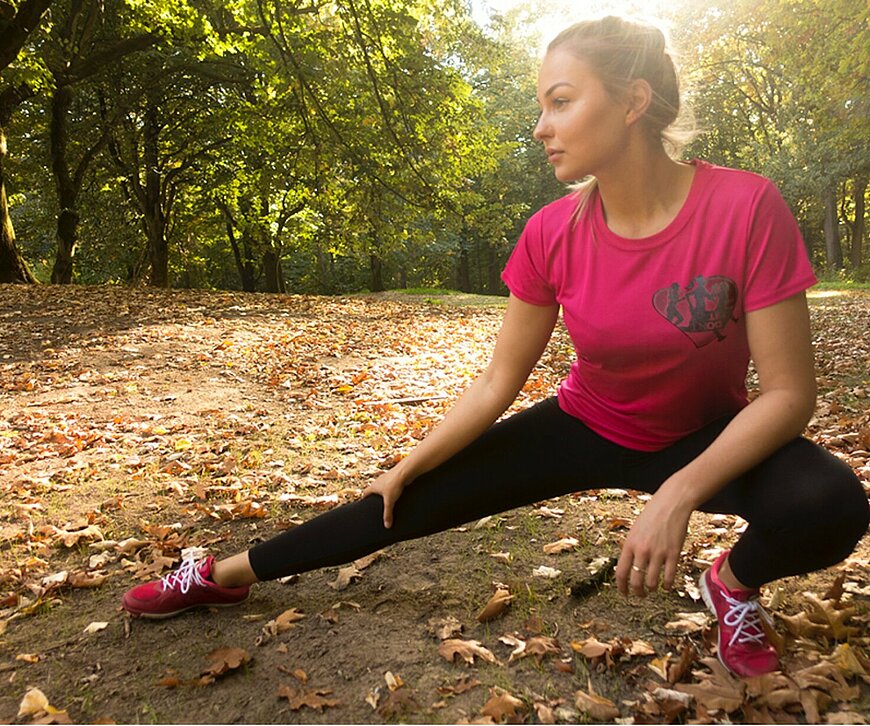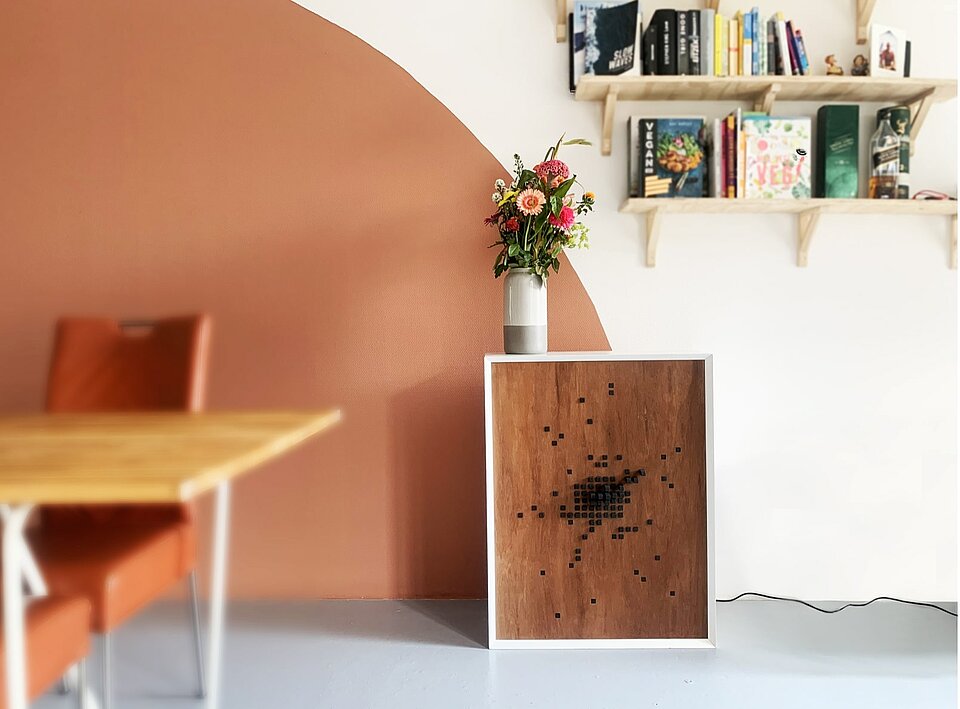A motivational clothes hanger helps you keep running

Running is a popular sport. Especially in this day and age. Except that many people also stop running again. Industrial designer Daphne Menheere researched how you can motivate people to keep running.
Just that extra wee push to go for a run. Still going when your running buddy cancels. Feeling good about going, even though it wasn’t as good as the last time. Industrial designer Daphne Menheere did research on how you can motivate people to keep on exercising. Usually that kind of motivation is done with the help of data from previous achievements, or the achievements of others. However, this does not motivate everyone.
Part of her research involves a clothes hanger that makes clothes fall off if you don’t go to exercise and a whale that starts talking to you at the moment you plan to run. Menheere is expected to receive her PhD from Eindhoven University of Technology at the end of June.
Since gyms are closed and no team sports can be played, more people have started to look for alternatives. Like running. A very popular and accessible sport, Menheere says: “But it also has a high drop-out rate. In my research, it’s all about how you stay motivated to exercise.”
Emotions and barriers
One of the things she did was a diary study. In which she asked respondents to write down each day whether they planned to exercise or not and, whether or not they ended up doing so. Menheere distilled emotions and barriers from this which people experience in four different situations: When you have no intention of exercising and do not exercise. When you have the intention of exercising but do not exercise. When you have the intention and do exercise. And finally, when you have no intention to exercise but do exercise.
Three stages can also be discerned: The moment before exercising, during exercising, and the stage after exercise. At each stage there are different emotions, such as doubt, desire, energy, confidence, frustration, uncertainty and pride. Or getting your clothes ready on the day you want to run. Or doubting all day whether you will go. And while running, thinking: What am I doing to myself? Or feeling really good.
The weather
With these different situations and stages, Menheere wants to provide insight into what a sporter is going through. By doing this, she hopes other designers can hook onto something to make a product that motivates people to exercise. “Other studies done on barriers to exercise often publish a list of reasons not to exercise. That it’s because of the weather as to why people do or don’t go, or that stress is a barrier. That is not something you can work with as a designer.”
Menheere divided the motivation problem into smaller segments. “This creates a ‘challenge’ that a designer then comes up with a product for.” During her doctoral research, Menheere was also designing products herself, but it was mainly undergraduate and graduate students in Industrial Design who came up with new products. They were supervised by Menheere and university lecturer Carine Lallemand. Eventually, six products were created.
Sport buddy
Bachelor student Alynne de Haan developed as her graduation project a ‘tangible sport buddy’, Ráya, with whom you can plan to work out with. The buddy kindly reminds you of your plan. Or in an unfriendly way if it looks like you’re not going to go. It works via Google speech. Menheere: “So you can really start a conversation with it. We chose a whale because people get a sense of anxiety more quickly when they see an animal. It also has a heartbeat that goes faster when you need to exercise and it also gets a little warm.”
Preparation ritual
When you plan to exercise, you hang your outfit on a clothes hanger. That hanger lets you know when you wanted to go. As the time to exercise approaches, the hanger’s arms slope down more and more. When it’s time and you haven’t put your sports gear on yet, they fall off. “We try to stimulate that moment of reflection that way. If you have to pick up your clothes anyway, then why not put them on and go for a run? You’ve got your sports gear right there, right?”
Menheere adds ‘friction’ to this. “Often a reward is the main motivator. But can being angry at yourself be motivating?” That friction does need to “stay fun,” Menheere says. “So there’s also an encouraging text from the hanger.” Student De Haan designed the clothes hanger too.


The smell of your running session
Another design for challenge three is a scent diffuser, Asynia. Some athletes visualize their race in advance. “That helps you to perform better. But you can also use it to get motivated. We want to encourage people to think about their running session in advance.” To that end, a student developed a device that diffuses the smells of a running session. “Like, for example, of grass, or how it smells when it has just rained.” Student Myrthe Hilderink designed the scent diffuser.
‘Social Support’
Whenever you think about going to the gym the next day, at that moment, you are looking forward to it. But when you actually want to start exercising, that positive feeling tends to fade. “I want to evoke that feeling you had when you were planning just before you start exercising.” Students Ilse Faber, Jesse Pepping, Bram Monkel & Stella Xu designed a bracelet, Grace, that communicates with friends’ bracelets through a secret language. “It’s kind of a ‘cheering you on’ moment.”
Getting dressed
For encouragement during running sessions, Menheere designed a T-shirt, Faye. She discovered during her research that the time spent getting dressed is crucial. “Once you put your clothes on, you go.” That’s why she developed a shirt on which a motivational text pops up as you get warmer, e.g. a motivational quote, such as: ‘don’t quit, do it‘, ‘believe in yourself‘ or ‘be you‘. A number of women ran in these T-shirts during the Ladies Run in Eindhoven, in 2018. Menheere designed the T-shits.
A sense of pride
“That wonderful feeling after running fades pretty quickly. How can you make sure that that sense of pride lasts for a couple of days?” Two master’s students, Evianne van Hartingsveldt & Mads Birkebæk, designed a “very cool object” for that very purpose. Menheere finds it ingenious: It’s an art object that you hang on your wall or put on a cabinet. An abstract representation of Eindhoven, represented by wooden rods.” That representation changes according to the running routes run. If you have been running, the board, via Runkeeper or Strava, makes the route visible by making the bars pop out in the shape of that route. “It then takes two days for the entire running route to become visible,” says Runkeeper. Those bars can be pushed back in again.
In recent months, two women tested out this device which has been dubbed ‘Laina’. One of them had gone for a run, but felt “pretty bad afterwards. She was slower and she did have to walk part of the way.” Those results were visible in her app. “Laina” was on all day at home.
“This is how a part of her route became visible each time,” Menheere explains. “In the end, she was glad she had gone running after all. She saw that she had actually gone, as opposed to how it had gone.”

